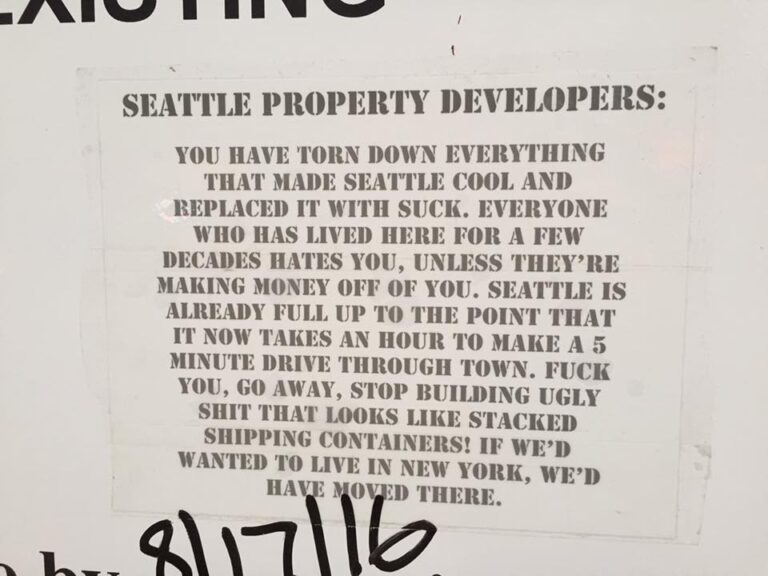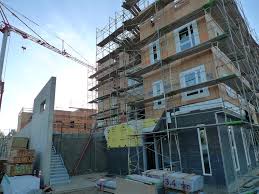Physical Address
304 North Cardinal St.
Dorchester Center, MA 02124
Physical Address
304 North Cardinal St.
Dorchester Center, MA 02124

Suburbs have been around for as long as there have been urbs – cities, that is – a fact Robert Bruegmann reminds us of in his excellent book Sprawl. And as sociologist Max Weber in The City and historian Henri Pirenne in Medieval Cities remind us, it’s often in the younger, freer suburbs rather than the older, more-conservative central city where entrepreneurial energy is unleashed. The difference today perhaps is that the epithet “sprawl” has been attached to this sort of outward, penumbral development, which, especially in the United States, has taken place very rapidly since World War II. Stripping it of its negative connotations, Bruegmann defines sprawl as “low density, scattered, urban development without systematic large-scale or regional public land-use planning.” A Sprawling Debate There has been a lot of Internet chatter lately about what libertarians ought to think about urban sprawl and its causes, including pieces by Kevin Carson, Austin Bramwell, Randal O’Toole, and Matthew Yglesias. The title of Ben Adler’s post basically sums it up: “If You Love the Free Market, You Should Hate Mandated Suburban Sprawl.” All seems to be centered on O’Toole’s recent comments on John Stossel’s program on Fox Business, which evidently defended urban sprawl against advocates of so-called “Smart Growth,” government policies intended to combat sprawl and its alleged bad consequences. I have not yet seen the show myself, so I’m really just responding here to the interesting reactions it has provoked. (I will perhaps explore the issue of whether sprawl is a good thing or a bad thing in another column.) On the one side are those, such as O’Toole, who hold that suburban sprawl is chiefly a free-market phenomenon and therefore an expression of consumer demand, and on the other are those, such as Yglesias and myself, who look at the […]

1. This week at Market Urbanism: How Houston Regulates Land Use by Nolan Gray Since there seems to be a lot of confusion about land-use regulation and planning in Houston, here’s a quick explainer on what Houston does regulate, doesn’t regulate, and how private covenants shape the city. Urban Design and Social Complexity by Sandy Ikeda A planner can’t build an entire city (or neighborhood even) because she can’t begin to design and construct the necessary diversity and social intricacy that happens spontaneously in a living city. And I don’t think she should even try to because it can irreparably damage, even kill, the living flesh of a city. Episode 3 of the Market Urbanism podcast with Nolan Gray: Sanford Ikeda on Jane Jacobs My guest this week is Sanford Ikeda, a professor of economics at SUNY Purchase and a visiting scholar at New York University. He has written extensively on urban economics, policy, and planning. Parking In A DC Bike Lane Is Extremely Cost-effective For Drivers by Jim Pagels This extreme lack of parking enforcement jives with my biking experience, during which I routinely have to dangerously swerve, often abruptly, out of the bike lane into car lane traffic due to a car or truck in the bike lane. 2. Where’s Scott? Scott Beyer spent his 3rd week in Phoenix. His Forbes article this week is about how San Francisco’s Bureaucracy, Unions Stifle Modular Housing For Homeless [Unions] oppose Kennedy’s lego housing project because the container units wouldn’t get built in America, and because his simplified construction process doesn’t conform to the local building code. This code…is favored by unions because it increases the time and costs involved in construction, meaning more work for them. 3. At the Market Urbanism Facebook Group: Laura Foote Clark invites us to the YIMBY […]

If you regularly read about cities, you might notice that Texas cities rarely seem to come up. We make cases for why Detroit is definitely coming back—just you wait! We come up with elaborate theories of how cities can become the next Silicon Valley. We spend hours coming up with a solution to New York City’s costumed panhandler problem. Yet the four urban behemoths of the Lone Star State—Houston, San Antonio, Dallas, and Austin—remain conspicuously absent from the conversation. Boy, has that changed. Earlier this year I wrote a sprawling defense of Houston. Scott Beyer spent the summer writing a series of articles for Forbes profiling the cool things happening in cities across the state. John Ricco recently launched the “Densifying Houston” Twitter feed and discussed the phenomenon on Greater Greater Washington. Just this past weekend, City Journal released an entire special issue dedicated to Texas. Through all this, many have been surprised to learn that a city like Houston could serve as a model for land-use policy and economic growth for struggling coastal cities. Yet two criticisms regularly seem to come up, at least related to Houston: “Houston is an unplanned hell-hole! It’s proof that land-use liberalization would be a disaster.” “Houston isn’t unplanned! It’s as heavily planned as any other city, just look at the covenants.” Since there seems to be a lot of confusion about land-use regulation and planning in Houston, here’s a quick explainer on what Houston does regulate, doesn’t regulate, and how private covenants shape the city. 1. What Houston Doesn’t Do Houston doesn’t mandate single-use zoning. Unlike every other major U.S. city, Houston doesn’t mandate the separation of residential, commercial, and industrial developments. This means that restaurants, homes, warehouses, and offices are free to mix as the market allows. As many have pointed out, however, market-driven separation of incompatible uses—think […]

1. This week at Market Urbanism: The “Global Buyers” Argument by Michael Lewyn The argument makes sense only when you add the following premise: housing prices can only be high in the presence of huge numbers of rich foreigners. I really don’t see any reason to take this premise seriously. Home-Sharing and Housing Supply by Michael Lewyn And if turning long-term rentals into short-term rentals is socially harmful, isn’t it even more harmful to prevent those long-term rentals from being built in the first place? Yet government does exactly that through zoning codes- often at the behest of neighborhood homeowners. Visions of Progress: Henry George vs. Jane Jacobs by Sandy Ikeda Much has been written, pro and con, on George’s single tax and also on Jacobs’s battles with planners the likes of Robert Moses, and if you’re interested in those issues you can start with the links provided in this article. Here I would like to contrast their views on the nature of economic progress and the significance of cities in that progress. Urban[ism] Legend: A Home Is A Good Investment by Emily Hamilton pursuing policies that encourage homeownership at the expense of other investment vehicles leaves people of all income levels worse off. Often, home ownership simply leads to higher levels of housing consumption rather than wealth-building. The consequences of buying a home may be dire for low-income families, and for the middle-class the decision should be based on rational calculations rather than the homeownership cheerleading that both parties offer. Airbnb Crowding Out Is A Symptom, Not A Cause Of Housing Shortages by Jim Pagels That Airbnbs may in fact take some small portion** of houses from the optionally relatively fixed full-time housing stock is a symptom, not a cause, of housing shortages and high prices. Asking if […]

Recently Stephen Eide, writing in City Journal, argued that states could run cities better than cities can run themselves, by offering an antidote to the mismanagement gripping many localities (“Caesarism for Cities:, March 2016). In the process, he overlooked the nefarious nature of many state governments, and the way in which they already inhibit cities. Eide begins his article with a litany of urban issues: excessive debt, unfunded pensions and political dysfunction. “Local political apathy has enabled some cities to become dominated by one party or even one interest group, skewing the political process and often encouraging extensive corruption and mismanagement of finances…Fans of local autonomy are hard-pressed to explain these and other failures.” This was a flimsy premise, since everything he wrote could be applied to states themselves. In fact, the very magazine he was writing for routinely publishes articles decrying and detailing the excessive spending, debt, political dysfunction and unfunded pension crises of states like California, Illinois, Rhode Island and New York. Yet it is unlikely that we will see a piece advocating for the federal government to rein in state spending. “It makes more sense for state, not city, officials to do what’s right when faced with local fiscal distress instead of what’s politically convenient,” Eide wrote, offering no support for this faith in state officials. In fact, states have shown little willingness to engage in fiscal restraint. The Texas Department of Transportation recently spent over a billion dollars to relieve congestion on the Katy Expressway near Houston by widening it, thus subsidizing sprawl and inducing further demand. California’s unfunded gold-plated pensions equal around $600 billion, according to Eide’s very own City Journal. Similar tales of irresponsible spending can be found in virtually every state. It’s worth considering how urban fiscal problems are exacerbated by state interference. Many […]

People sometimes support regulations, often with the best of intentions, but these wind up creating outcomes they don’t like. Land-use regulations are a prime example. My colleague Emily Washington and I are reviewing the literature on how land-use regulations disproportionately raise the cost of real estate for the poor. I’d like to share a few of our findings with you. Zoning One kind of regulation that was actually intended to harm the poor, and especially poor minorities, was zoning. The ostensible reason for zoning was to address unhealthy conditions in cities by functionally separating land uses, which is called “exclusionary zoning.” But prior to passage of the Civil Rights Act of 1968, some municipalities had race-based exclusionary land-use regulations. Early in the 20th century, several California cities masked their racist intent by specifically excluding laundry businesses, predominantly Chinese owned, from certain areas of the cities. Today, of course, explicitly race-based, exclusionary zoning policies are illegal. But some zoning regulations nevertheless price certain demographics out of particular neighborhoods by forbidding multifamily dwellings, which are more affordable to low- or middle-income individuals. When the government artificially separates land uses and forbids building certain kinds of residences in entire districts, it restricts the supply of housing and increases the cost of the land, and the price of housing reflects those restrictions. Moreover, when cities implement zoning rules that make it difficult to secure permits to build new housing, land that is already developed becomes more valuable because you no longer need a permit. The demand for such developed land is therefore artificially higher, and that again raises its price. Minimum lot sizes Other things equal, the larger the lot, the more you’ll pay for it. Regulations that specify minimum lot sizes — that say you can’t build on land smaller than that minimum […]

1. This week at Market Urbanism Palo Alto: The Land of Too Many Jobs by Jeff Fong The status quo isn’t defensible if you’re concerned with environmental degradation, inequality, poverty, slow growth, or even the decline of property rights. But, for tax protected homeowners, the status quo is exactly what they want and that’s reason enough for them to defend it. If Mayor Burt had simply called it like it is—that those in control of Palo Alto land use like the status quo, aren’t concerned with how it affects others, and will continue blocking incremental change—then we could have at least applauded his honesty. When It Comes to Walkability, Mexico City Is Miles Ahead by Nolan Gray Where in many U.S. cities open space is regulated into every single lot through floor area ratio regulations, Mexico City’s developments are dense and public space is efficiently relegated to the city’s ample parks and public spaces. This density and mixture of uses keeps sidewalks busy and safe at nearly all hours of the day. The Answer to Expensive Housing: Build More by Sanford Ikeda If you restrict the supply of housing, other things equal, what will happen to the price? That’s not a trick question. Any competent Econ 101 student would answer correctly that the price will rise. Can Housing Quotas Affect Demand For Housing? by Chris Bradford It’s a provocative argument. It turns the Econ 101 arguments upside down. Not surprisingly, it generated a fair amount of annoyed twitter chatter from market urbanists (including me) and sage head-nodding from those who believe new construction begets high home prices. 2. Where’s Scott? Scott Beyer is halfway through the longest single drive of his trip, the 1,000 miles between Austin and Phoenix. He will be stopping in San Antonio, Del Rio, El […]

If you restrict the supply of housing, other things equal, what will happen to the price? That’s not a trick question. Any competent Econ 101 student would answer correctly that the price will rise. One reporter for the Washington Post gets it. In a hopeful sign of spreading economic literacy, Emily Badger writes: In tight markets, poor and middle-class households are forced to compete with each other for scarce homes. And so new market-rate housing eases that competition, even if the poor aren’t the ones living in it. Over time, new housing also filters down to the more affordable supply, because housing becomes less desirable as it ages. That means the luxury housing we’re building today will contribute to the middle-class supply 30 years from now; it means today’s middle-class housing was luxury housing 30 years ago. Typical critics of soaring housing prices have a much harder time grasping this. They don’t see that zoning rules and restrictions meant to make urban life more “livable” (often for the well-established homeowner) reduce supply and put strong upward pressure on prices. Minimum lot sizes, maximum density restrictions, minimum parking requirements, and so on all contribute to reducing the supply. And it raises prices not only for the wealthy, but also for middle- and lower- income families, as well. Instead, they think that new construction of market-rate housing is somehow the source of the problem, rather than a solution. (Emily Washington and I recently published a useful summary of the literature on the regressive effects of land-use regulation.) Ever wonder how ordinary people could afford to live in major cities before there were rent controls and land-use regulations? Builders built wherever it was the most profitable. The middle-incomers didn’t have to compete with the wealthy for middle-income housing, and the poor then didn’t have to compete with the middle-incomers for low-priced […]

Co-authored by Tony Albert and Jeff Fong SF Curbed recently sat down with Patrick Burt, Mayor of Palo Alto, to get his response to the high profile resignation of Kate Vershov Downing. Downing, of course, was the Palo Alto Planning Commissioner who publicly announced that she will move her family from the city because of high housing prices. Mayor Burt’s response illustrates a complete failure to accept either the nature or the cause of our housing crisis. And were we not so desensitized to this type of thinking here in the Bay Area, it would be hard to distinguish his comments from satire. Too Many…Jobs? Mayor Burt’s first, and perhaps most bizarre, assertion is that Palo Alto’s problem is job growth—both within the city as well as within its Peninsula neighbors. And that part of the solution must be to slow down or displace new job creation. Take a minute and let that sink in. An elected government official is calling out job growth as a problem, and advocating for policies to slow it down. Mayor Burt says that… we’re in a region that’s had extremely high job growth at a rate that is just not sustainable if we’re going to keep [Palo Alto] similar to what it’s been historically. Of course we know that the community is going to evolve. But we don’t want it to be a radical departure. We don’t want to turn into Manhattan. Job growth increases housing demand, and if housing supply increases more slowly than housing demand, housing prices rise to make up the difference. Mayor Burt is willing to admit that housing prices are too high, but actively rejects the idea that Palo Alto needs to significantly intensify land use with town homes or multi-family apartments. This leaves him backed into the absurd corner of addressing […]

1. This week at Market Urbanism Episode 1 of the Market Urbanism podcast came out this week. Nolan Gray plans to release new episodes bi-weekly. The RSS feed is http://feeds.soundcloud.com/users/soundcloud:users:236686274/sounds.rss You can currently find the podcast on Soundcloud and PlayerFM. It will be available within the next few days on iTunes, Stitcher, and TuneIn. If there are other podcasting services you would like me to plug the RSS feed into, please let me know in the comment section below. Cities And The Growth Of Our Collective Brain by Emily Hamilton Sandy Ikeda describes the entrepreneur’s environment as the “action space.” Today, an action space could be in a suburban home for an entrepreneur who creates a digital product that’s sold online. While action space doesn’t necessarily need to be a place of high density, this face-to-face element remains a key part of the world’s most productive action spaces. Economist Sandy Ikeda, a previous MU contributor, is back. Here’s the first of what will be weekly content, published every Tuesday at 10am eastern standard time–How The Housing Market Works In other words, it’s not the entrepreneurs, developers, architects, and construction companies that build very expensive housing in cities like New York that drives up housing prices! Indeed, those people are responding to what they believe buyers are willing to pay, and if they are prevented from building those units the result will be higher prices for everybody. And if you observe housing prices rise despite increasing supply, that probably indicates demand is currently increasing faster than supply. Prices, however, would have been even higher were the government to undertake policies that restricted supply. 2. Where’s Scott? Scott Beyer is spending his last night tomorrow in Austin. Then he’ll spend a couple days in San Antonio, before leaving Texas. His Forbes article this week […]